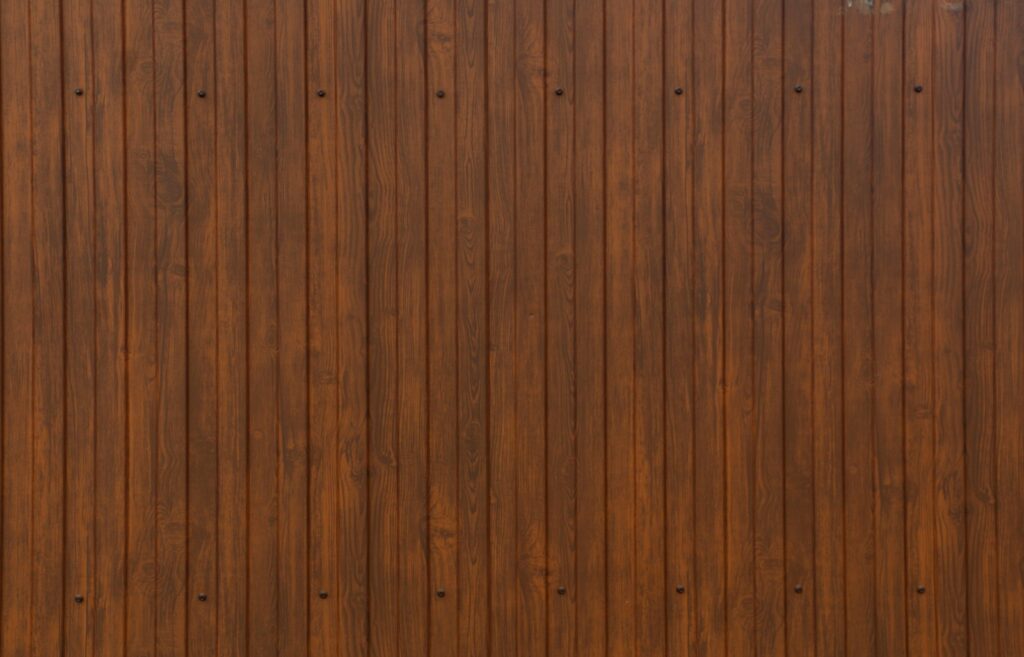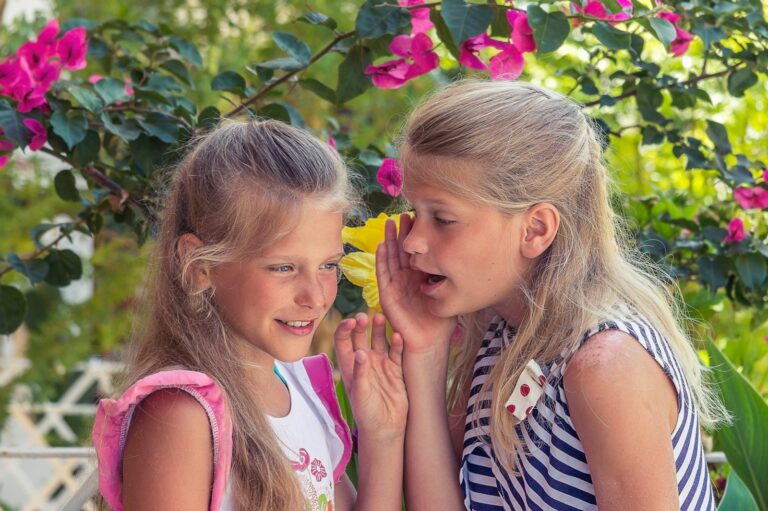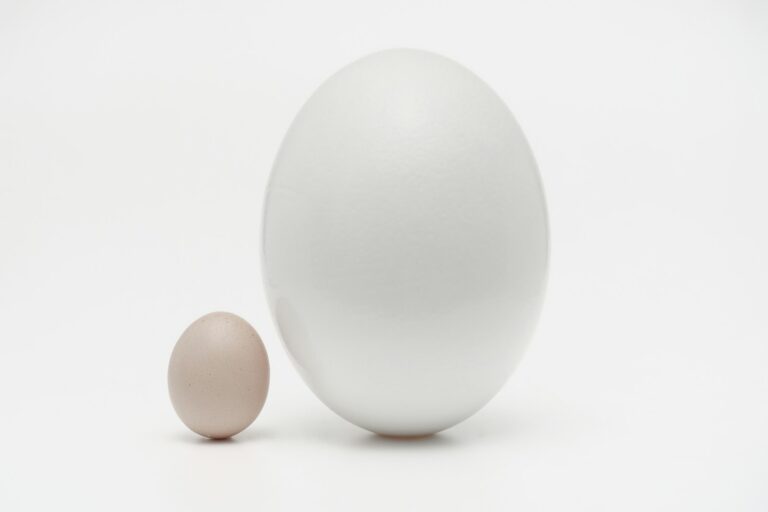How to Say “The Color Brown” in Spanish: Marrón, Café, and Castaño
Imagine you’re wandering through a bustling market in Madrid, surrounded by vibrant colors and the tantalizing aroma of fresh churros. You spot a beautiful leather bag that catches your eye, and you want to ask the vendor about it. But wait—how do you say “brown” in Spanish? You don’t want to miss out on this perfect souvenir just because of a language barrier.
Learning how to say colors in another language can be a game-changer, especially when you’re traveling. Knowing that brown translates to marrón or café can make your shopping experience smoother and more enjoyable. Plus, it shows the locals that you’re making an effort to speak their language, which can go a long way in building connections.
El Color Marrón: The Primary Translation for Brown
Knowing how to say brown in Spanish can be surprisingly useful. Whether you’re shopping for clothes or describing your favorite coffee, “marrón” is the word you’ll need.
Pronunciation Guide for “Marrón”
Getting the pronunciation right can make a world of difference. “Marrón” is pronounced /maˈroŋ/ (MAH-rohn). This standard pronunciation is understood across Spanish-speaking countries.
Regional Variations in Pronunciation
You might hear slight variations. In some parts of Latin America, locals might pronounce it as /maˈroŋo/ or /maˈroŋe/. You’ll notice the core sound stays consistent, even if small nuances change.
Phonetic Spelling
Using the International Phonetic Alphabet (IPA), “marrón” is spelled /maˈroŋ/. This helps you grasp the exact sounds and pronunciation.
Etymology and Origin of “Marrón”
Ever wondered why it’s called “marrón”? The word comes from the Latin “marronis,” which referred to a type of chestnut. It’s fascinating to see how languages evolve, isn’t it?
When to Use “Marrón” in Everyday Spanish
Imagine you’re strolling through a vibrant market in Madrid or Buenos Aires. You spot a beautiful handbag. When describing it, you’d use “marrón” to convey its rich brown color.
Here are a few instances where “marrón” comes handy:
Incorporating “marrón” into your vocabulary not only helps in practical situations but also shows locals you’re making an effort to speak their language, which can lead to deeper connections.
Alternative Ways to Say Brown in Spanish

Brown is more than just a color; it’s a rich world of shades and meanings. When you’re learning Spanish, knowing various ways to say brown enhances your vocabulary and lets you connect with different cultural nuances.
“Café”: The Coffee-Colored Option
Contexts where “café” is preferred
Think about the last time you enjoyed a steaming cup of coffee. The word café doesn’t just describe the drink; it also perfectly captures that warm, rich brown color. This term fits well in contexts related to food and beverages. For instance, you’ll often hear “el café está muy caliente” (the coffee is very hot) or “esa mesa es de color café” (that table is brown). Café is your go-to when describing anything reminiscent of coffee’s earthy tone.
Cultural Significance of “Café” in Spanish-Speaking Countries
Coffee isn’t just a drink; it’s a cultural cornerstone in many Spanish-speaking countries. Just imagine walking into a bustling cafetería and smelling the freshly brewed coffee. The term café resonates deeply because it evokes daily life scenes, from morning routines to social gatherings. This word taps into shared traditions and memories, adding depth to its simple description of color.
“Castaño”: The Chestnut-Colored Alternative
Using “Castaño” for Hair Color
When you’re talking about hair, castaño is the preferred term. For example, someone might say, “Ella tiene el pelo castaño,” meaning “She has chestnut brown hair.” This term beautifully aligns with the natural shades seen in chestnut trees. If you’re describing someone’s hair, castaño gives a more specific and elegant touch.
Other Applications of “Castaño”
Beyond hair, castaño is also used in other contexts like fashion and nature. For example, “una chaqueta castaña” (a chestnut brown jacket) or “las hojas castañas del otoño” (the chestnut-colored autumn leaves). This word brings a touch of nature into everyday descriptions, making your Spanish richer and more vibrant.
Regional Variations Across Spanish-Speaking Countries
Not all Spanish-speaking regions use these terms the same way. In some places, you’ll hear marrón more often, while others might favor café or castaño. For example, in Spain, marrón is frequently used, but in Mexico, you might hear café more often. These regional differences add another layer of richness to the language and can make your conversations more locally resonant.
Word | Context | Example Sentence |
|---|---|---|
Café | Food and objects | “Esa mesa es de color café.” (That table is brown.) |
Castaño | Hair, fashion, nature | “Ella tiene el pelo castaño.” (She has chestnut hair.) |
Marrón | General use, varies by region | “El zapato es marrón” (The shoe is brown.) |
Feel free to explore the rich world of brown shades in Spanish, and you’ll find yourself not just speaking the language but coloring your conversations with culture and nuance.
Using “Brown” in Spanish Sentences
Talking about colors in Spanish opens doors to deeper connections. Let’s make the color brown, or marrón, a vibrant part of your Spanish conversations.
Basic Sentence Structures
Using brown in Spanish sentences doesn’t have to be complex. Here are some starter phrases.
“El color marrón” (The color brown)
Explaining color specifics? Use “El color marrón”. Imagine showing someone your new brown jacket. Point to it and say, “Me encanta el color marrón de mi chaqueta” (“I love the brown color of my jacket”). It’s straightforward and to the point.
“Es marrón” (It is brown)
When you want to describe something’s color quickly, “Es marrón” fits perfectly. Got a brown hat? Simply say, “Mi sombrero es marrón” (“My hat is brown”). Easy, right?
Describing Objects with Brown Colors
Talking about everyday objects in specific colors makes your Spanish pop.
Clothing: “La camisa marrón” (The brown shirt)
Describing clothes? Say, “La camisa marrón”. Compliment someone’s outfit with “Esa camisa marrón te queda genial” (“That brown shirt looks great on you”).
Animals: “El oso marrón” (The brown bear)
Discussing animals? “El oso marrón” is useful. Narrate a wildlife adventure: “Vimos un oso marrón en el parque nacional” (“We saw a brown bear in the national park”).
Expressing Preferences: “Me gusta el marrón” (I like brown)
Preferences make conversations personal. If you love brown, tell others with “Me gusta el marrón”. Share your favorite color like this: “En casa, me encanta usar el marrón para decorar” (“At home, I love using brown for decorating”).
Here’s a handy table summarizing these phrases:
Category | Spanish Phrase | English Translation |
|---|---|---|
Basic Colors | El color marrón | The color brown |
Simple Descriptions | Es marrón | It is brown |
Clothing | La camisa marrón | The brown shirt |
Animals | El oso marrón | The brown bear |
Preferences | Me gusta el marrón | I like brown |
Incorporate these phrases, and you’ll add hues of authenticity to your Spanish dialogues.
Tonos Marrones: Shades of Brown in Spanish

Brown isn’t just brown. Jump into the rich world of brown shades in Spanish. Here’s how you can bring a touch of authenticity and local flavor into describing the many tones of brown.
Light Brown Shades
“Marrón Claro” (Light Brown)
You use “marrón claro” to specify a light brown. It’s like the color of sandy deserts or light wood. If you’re talking about a shirt, you might say, “Me gusta tu camisa marrón claro.” (I like your light brown shirt).
“Beige” and “Tostado” (Beige and Toasted)
For a more neutral tone, “beige” is your go-to. Think sandy beaches and soft linens. In contrast, “tostado” suggests something a bit richer, akin to toasted bread. Imagine talking about furniture – “La mesa tiene un color tostado hermoso.” (The table has a beautiful toasted color).
Medium Brown Shades
“Marrón Medio” (Medium Brown)
“Marrón medio” is what you’d call a straightforward medium brown. It’s versatile, fitting for describing everyday items. “Esa chaqueta marrón medio combina con todo.” (That medium brown jacket goes with everything).
“Canela” and “Avellana” (Cinnamon and Hazelnut)
“Canela” (cinnamon) evokes the warm, spicy hue of the spice, perfect for cozy, autumnal descriptions. You might say, “El suéter color canela es ideal para otoño.” (The cinnamon-colored sweater is perfect for fall). “Avellana” (hazelnut) has a slightly richer tone, think of delicious hazelnut spread. Use it in context like, “Me encanta el color avellana de tu abrigo.” (I love the hazelnut color of your coat).
Dark Brown Shades
“Marrón Oscuro” (Dark Brown)
“Marrón oscuro” is deep and rich, like dark chocolate. It’s perfect for describing leather goods. “Quiero esos zapatos color marrón oscuro.” (I want those dark brown shoes).
“Chocolate” and “Caoba” (Chocolate and Mahogany)
“Chocolate is a more evocative way to call something dark brown, tied to the indulgent treat. Describe a vehicle, “Mi carro nuevo es color chocolate.” (My new car is chocolate-colored). “Caoba” (mahogany) reflects a darker, reddish-brown hue often seen in fine furniture, “La mesa de caoba es muy elegante.” (The mahogany table is very elegant).
Shade | Spanish Term | Example Phrase | English Translation |
|---|---|---|---|
Light Brown | Marrón claro | Me gusta tu camisa marrón claro. | I like your light brown shirt. |
Beige | Beige | La pared beige da tranquilidad. | The beige wall brings calm. |
Toasted | Tostado | La mesa tiene un color tostado hermoso. | The table has a beautiful toasted color. |
Medium Brown | Marrón medio | Esa chaqueta marrón medio combina con todo. | That medium brown jacket matches everything. |
Cinnamon | Canela | El suéter color canela es ideal para otoño. | The cinnamon-colored sweater is perfect for fall. |
Hazelnut | Avellana | Me encanta el color avellana de tu abrigo. | I love the hazelnut color of your coat. |
Dark Brown | Marrón oscuro | Quiero esos zapatos color marrón oscuro. | I want those dark brown shoes. |
Chocolate | Chocolate | Mi carro nuevo es color chocolate. | My new car is chocolate-colored. |
Mahogany | Caoba | La mesa de caoba es muy elegante. | The mahogany table is very elegant. |
This table captures some of the most expressive ways to describe shades of brown in Spanish, helping you to bring rich vocabulary into your conversations.
Brown in Spanish Culture and Nature
Brown isn’t just a color; it’s a rich, meaningful hue woven into the fabric of Spanish-speaking cultures and nature. It’s more than just a word—it’s part of everyday life and vivid landscapes.
Brown in Spanish Art and Literature
Art and literature in Spanish cultures often showcase the diverse meanings of brown. Think about “marrón” in paintings by Diego Rivera, where earthy tones depict the hardworking spirit of people. In literature, “castaño” captures the essence of autumn landscapes and chestnut trees, highlighting its poetic resonance. Have you read poems that bring images of “café” skin or “pardo” vistas to life?
Nature and Geography
Nature and geography across Spanish-speaking regions abound in shades of brown, from majestic mountains to sprawling deserts.
“Tierra marrón” (Brown Earth)
Brown earth, or “tierra marrón,” symbolizes the fertile soil making agriculture possible. Imagine the fields throughout Spain and Latin America, where “marrón” stands for a livelihood. This earthy tone shows how integral brown is to sustaining life and cultural practices.
“El Oso Pardo” (The Brown Bear)
The brown bear, or “el oso pardo,” roams the forests of northern Spain. It’s an enduring symbol of wilderness and conservation. Have you ever thought how color connects wildlife to geographic identity?
Food and Cuisine
Brown brings warmth and depth to Spanish cuisine, a vital part of cultural identity.
“Frijoles Marrones” (Brown Beans)
“Frijoles marrones” are a staple in many dishes. Their hearty texture and rich color reflect culinary traditions across Mexico, Puerto Rico, and countless other kitchens. Whether in a comforting “sopa de frijoles” or a festive “feijoada,” these beans embody home-cooked goodness.
“Pan Integral” (Brown Bread)
“Pan integral,” or brown bread, offers a wholesome bite in a culture that values traditional baking. From bustling markets in Colombia to cozy cafes in Argentina, the scent of freshly baked “pan integral” ties communities together. Have you noticed how food brings us closer to understanding a culture?
Spanish Term | English Translation | Context |
|---|---|---|
Marrón | Brown | Universally used term for brown |
Café | Brown | Used in Latin America, especially for eyes and hair color |
Castano | Chestnut Brown | Describes chestnut-colored hair or objects |
Pardo | Brownish-Gray | Sometimes used for eyes or hair color |
Tierra Marrón | Brown Earth | Fertile soil in agriculture |
El Oso Pardo | The Brown Bear | Wildlife in northern Spain |
Frijoles Marrones | Brown Beans | Staple in many Latin American dishes |
Pan Integral | Brown Bread | Traditional baked good in various Spanish-speaking regions |
Practical Tips for Mastering “Brown” in Spanish
Want to nail saying “brown” in Spanish? Here’s how to make it stick!
Mnemonic Devices for Remembering Marrón
Use mnemonic devices to connect marrón with familiar brown objects:
Visual Associations with Common Brown Objects
Link marrón to common brown items to make it easier to recall:
Practice Exercises
Get hands-on with your learning. Here are some exercises:
Color Identification Activities
Use these activities to practice:
Sentence Construction Drills
These drills will help you use marrón in context:
Additional Tips
To further solidify your understanding:
Visual Image | Spanish Term |
|---|---|
Brown Dog | Marrón Perro |
Chocolate Bar | Marrón Chocolate |
Wooden Chair | Marrón Madera |
Common Mistakes When Using “Brown” in Spanish

Let’s jump into some common mistakes folks make when using brown in Spanish. It’s more than just translating a word—it’s about context and nuance. Ready to get your Spanish color game right? Here we go!
Confusing “marrón” with Similar-Sounding Words
Have you ever mixed up words that sound the same but mean different things? In Spanish, marrón (brown) can often be confused with maroon, a darker reddish-brown color. Picture this: you’re describing your new jacket, proudly saying it’s marrón, when you actually mean maroon. Quite the fashion faux pas, right? Also, don’t confuse marrón with moreno, which refers specifically to darker skin tones or hair color. Imagine describing someone’s hair as marrón when it should be moreno—oof, awkward!
Incorrect Gender Usage with “marrón”
Here’s a quick Spanish grammar refresher: marrón is masculine and must be used with the masculine article el. You’d say el marrón for “the brown color”. Slip up here, and you’re facing grammatical errors. Think of it like calling a boat “he”. Feels a bit off, doesn’t it? Make sure you pair it right.
Overusing “marrón” When Other Terms Are More Appropriate
Sometimes, marrón isn’t the best fit. Is the color you’re describing closer to a rich coffee or a chestnut? You might want to use café or castaño instead of marrón. When talking about hair, castaño might hit the mark better. Or if you’re describing a lighter brown, carmelito could be more suitable. Throwing marrón around might feel easier, but why not get a bit more colorful with your vocabulary?
Situation | Better Term |
|---|---|
Describing Hair | castaño |
Lighter Brown Shades | carmelito |
Coffee-colored Brown | café |
Engaging with colors in Spanish is like adding spices to your cooking—a bit more intentional, and your language becomes richer and more delightful. Remember, language is living and expressive, not just words on a page. Keep practicing, and soon, using these terms will feel as natural as your favorite color.
Conclusion: Confidently Using “The Color Brown” in Spanish
Embracing the color brown in Spanish can open up a world of richer communication and cultural understanding. Whether you opt for “marrón,” “café,” or “castaño,” you’ll find that each term adds a unique flavor to your conversations.
Remember to consider context and regional preferences when choosing your words. Don’t be afraid to make mistakes; they’re just stepping stones to fluency. Use the tips and tricks shared to practice and internalize these terms.
By actively engaging with colors in Spanish, you’ll make your language skills more dynamic and expressive. So go ahead and sprinkle some “marrón” into your vocabulary and watch your Spanish come to life!
Frequently Asked Questions
What does “marrón” mean in Spanish?
“Marrón” is the Spanish word for the color brown. It’s widely used across Spanish-speaking countries to describe the color brown in everyday contexts.
Are there different terms for brown in Spanish?
Yes, apart from “marrón,” other terms like “café” and “castaño” are also used. The choice of word can depend on the context, such as “café” for a lighter brown and “castaño” often referring to brown hair.
How do you pronounce “marrón”?
“Marrón” is pronounced as mah-ROHN, with a strong emphasis on the second syllable.
Is there a regional preference for the term “marrón”?
In some regions, “marrón” is more commonly used, while in others, “café” might be preferred. The terms are generally understood throughout the Spanish-speaking world but can vary locally.
What are the common mistakes when using “brown” in Spanish?
Common mistakes include confusing “marrón” with similar-sounding colors like maroon or using the incorrect gender form. For example, it’s “el marrón” (masculine), not “la marrón.”
Why is understanding shades of brown important in Spanish?
Different contexts and cultural significance can affect the use of brown shades. For instance, “castaño” is often used for hair color, while “café” might describe the color of objects similar to coffee.
How can I avoid confusing “marrón” with maroon or moreno?
To avoid confusion, remember that “marrón” is brown, “maroon” is a dark red color often referred to as “granate” in Spanish, and “moreno” refers to a darker complexion or hair color.
What is the cultural significance of brown in Spanish-speaking countries?
Brown has various cultural significances in Spanish-speaking countries, prominently featuring in art, literature, nature, and cuisine, reflecting rich and diverse cultural traditions.
How can using the right color terms improve my Spanish fluency?
Using the correct terms helps make your communication more vibrant and natural, allowing you to express yourself more precisely and engagingly in Spanish.






